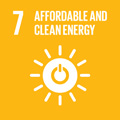- Docente: Angelo Tani
- Credits: 6
- SSD: ING-IND/32
- Language: Italian
- Teaching Mode: In-person learning (entirely or partially)
- Campus: Bologna
- Corso: Second cycle degree programme (LM) in Electrical Energy Engineering (cod. 6714)
-
from Feb 16, 2026 to May 26, 2026
Learning outcomes
The course aims to provide skills for the analysis and the design of power electronic converters. Main topics are the topologies of AC/DC, DC/DC, DC/AC and AC/AC converters, the criteria for sizing, and the control strategies. Specific industrial applications of these converters, such as UPS, motor control, and active filters, will be analyzed.
Course contents
Prerequisites
Basic skills in electrical engineering.
Course Contents
AC/DC converters
Single-phase and three-phase bridge rectifiers. Effects of the line impedance, impact on the grid of diode and SCR rectifiers.
DC/DC converters
Two quadrant choppers. Pulse Width Modulation, hysteresis current regulators, PI based current regulators.
DC/AC converters
Introduction to current source inverters.
Single-phase voltage source inverters. Basic structure, square wave modulation, Pulse Width Modulation, output current ripple analysis, input current analysis.
Three-phase voltage source inverters. Basic structure, square wave modulation, Space Vector Modulation and generalized Pulse Width Modulation, output current ripple analysis, input current analysis, hysteresis current regulators, PI based current regulators in a stationary reference frame, PI based current regulators in a synchronous reference frame.
Multilevel inverters. Diode-clamped inverters, cascaded inverters, square wave modulation, Pulse Width Modulation.
AC/AC converters
Back-to-back converter. Structure and modulation strategy. Introduction to matrix converters. Grid interface of variable speed generators.
Space vectors and zero sequence components
Direct and inverse transformations, properties.
Power conditioning systems
Active Filters. Structures and control strategies.
The lessons are supported by exercises with Personal Computer involving the analysed power electronic converters.
Readings/Bibliography
It is not necessary to buy specific books. The pdf files of the slides utilized during the lessons are indispensable and sufficient for the preparation for the exam, and are available on VIRTUALE. For further considerations:
Title: Power Electronics: Converters, Applications, and Design, 3rd Edition
Authors: Mohan Ned, Undeland Tore M., Robbins William P
Editor Wiley&sons
Published: 2003
ISBN: 978-0-471-22693-2
482 pages
Teaching methods
The frontal lessons are supported by exercises with Personal Computer (MATLAB-Simulink).
Assessment methods
The exam consists of an oral examination, which is based on the discussion of 3 course topics (one of the topics can be freely chosen by the student), and the discussion of a report (prepared by the student) with simulation results concerning some power electronic converters.
Students with specific learning disorders (SLD) or temporary/permanent disabilities.
We recommend contacting the University Office responsible for support services in a timely manner (https://site.unibo.it/studenti-con-disabilita-e-dsa/it) [https://site.unibo.it/studenti-con-disabilita-e-dsa/it):] . The office will evaluate the students' needs and, where appropriate, propose possible accommodations. These must in any case be submitted for approval at least 15 days in advance to the course instructor, who will assess their suitability also in relation to the learning objectives of the course.
Teaching tools
Lessons are carried out with the help of a personal computer and a computer projector (Power Point). The pdf files of the slides utilized during the lessons are available on VIRTUALE. Exercises are carried out with the help of a personal computer (MATLAB-Simulink).
Office hours
See the website of Angelo Tani
SDGs



This teaching activity contributes to the achievement of the Sustainable Development Goals of the UN 2030 Agenda.
